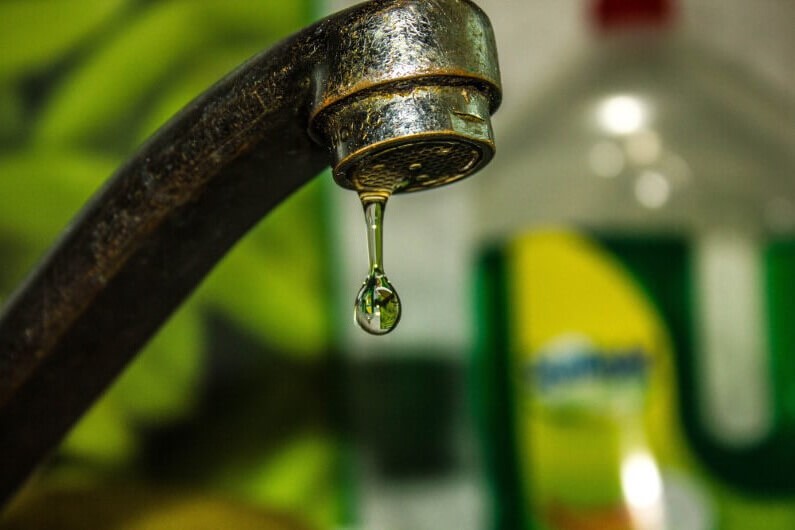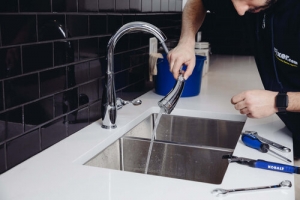Listed here in the next paragraphs you can find a good deal of exceptional points when it comes to Why Are My Faucets Dripping (And Can I Fix It Myself)?.

Trickling faucets could look like a small aggravation, however their effect goes beyond just the aggravation of the noise. From drainage to sustaining unnecessary monetary prices and wellness threats, ignoring a leaking tap can cause various repercussions. In this post, we'll explore why it's crucial to address this typical household concern immediately and effectively.
Waste of Water
Environmental Effect
Leaking faucets add considerably to water wastefulness. According to the Epa (EPA), a single tap dripping at one drip per second can squander more than 3,000 gallons of water annually. This not just strains water resources but also affects ecological communities and wild animals depending on them.
Financial Expenses
Increased Water Expenses
Beyond the ecological influence, trickling taps can blow up water bills substantially. The accumulated wastage over time equates into higher utility expenditures, which might have been avoided with prompt repair work.
Possible Home Damages
In addition, extended leaking can result in harm to fixtures and surface areas surrounding the faucet. Water accumulation can create discoloration, corrosion, and even architectural concerns if left unattended, leading to additional repair work costs.
Health Issues
Mold And Mildew and Mildew Growth
The constant presence of moisture from a trickling tap produces a suitable environment for mold and mildew and mildew growth. These fungis not only endanger indoor air top quality but additionally present wellness threats, specifically for individuals with breathing problems or allergic reactions.
Waterborne Diseases
Stagnant water in trickling faucets can become a breeding place for germs and other microorganisms, boosting the risk of waterborne illness. Pollutants such as Legionella germs thrive in stationary water, potentially causing severe diseases when ingested or breathed in.
DIY vs. Expert Repair service
Pros and Cons of DIY Repair Service
While some may try to take care of a leaking faucet themselves, DIY repairs include their very own set of difficulties. Without proper expertise and devices, do it yourself efforts can exacerbate the issue or bring about incomplete fixings, extending the trouble.
Advantages of Working With an Expert Plumber
Employing a specialist plumber ensures that the underlying root cause of the trickling faucet is addressed successfully. Plumbers have the know-how and devices to detect and repair tap issues successfully, conserving time and lessening the danger of further damages.
Step-by-Step Guide to Repairing a Dripping Tap
Devices Needed
Prior to attempting to fix a leaking tap, gather the required tools, including a flexible wrench, screwdrivers, substitute components (such as washers or cartridges), and plumber's tape.
Common Faucet Issues and Their Solutions
Recognize the type of faucet and the specific problem creating the drip. Typical troubles include worn-out washers, rusty shutoff seats, or faulty O-rings. Refer to supplier directions or on-line tutorials for step-by-step guidance on fixings.
Preventive Measures
Normal Upkeep Tips
To stop trickling taps, do regular maintenance such as cleaning aerators, evaluating for leaks, and changing worn-out parts without delay. Furthermore, take into consideration setting up water-saving tools or updating to extra efficient components.
Importance of Prompt Repairs
Attending to dripping taps as quickly as they're noticed prevents additional water wastefulness and possible damages, inevitably conserving both water and cash in the future.
Effect On Building Value
Understanding of Well-Maintained Home
Keeping a building in good condition, consisting of dealing with maintenance problems like trickling taps, boosts its perceived worth and worth among possible buyers or occupants.
Impact on Resale Value
Qualities with well-maintained plumbing components, including faucets, command greater resale worths in the real estate market. Attending to leaking taps can add to a favorable impression during residential property inspections and settlements.
Ecological Duty
Specific Contribution to Preservation
Taking duty for dealing with trickling taps straightens with more comprehensive efforts toward water conservation and ecological sustainability. Every person's activities jointly make a considerable impact on maintaining precious sources.
Sustainable Living Practices
By prioritizing prompt fixings and taking on water-saving routines, individuals add to sustainable living methods that profit both existing and future generations.
Verdict
Resolving a trickling faucet goes beyond simple convenience; it's a vital action toward preserving water, decreasing monetary expenses, and guarding health and wellness and property. Whether via do it yourself repair services or specialist support, taking action to fix leaking faucets is a tiny yet impactful means to advertise liable stewardship of resources and add to a healthier, much more lasting future.
How to Fix a Dripping or Leaky Faucet
A leaking faucet is one of the most common problems that homeowners encounter, but it being commonplace doesn’t make it any less annoying. The constant drip drip drip of a leaking bathtub faucet, showerhead, or sink tap can disturb your home’s serenity. Left neglected, a dripping faucet can also result in higher water bills and discoloration or mold growth in your sink or plumbing fixtures.
Fortunately, you don’t have to be a trained plumber to know how to stop a dripping faucet. With some basic tools, replacement parts, and a little patience, leaky faucet repair is a breeze. In this article, we’ll explain what causes dripping faucets and how you can fix them.
What Causes a Leaking Faucet?
Kitchen and bathroom faucets come in all manner of designs, but most involve some combination of valves, O-rings, seals, and washers. The O-ring is usually the weakest link, but any one of these pieces can wear down over time. Heat, moisture, temperature fluctuations, minerals, mold, and movement can contribute to warping and corrosion, breaking the watertight seal. This just comes with the territory of being a homeowner. Everything is always subject to wear and tear, and some component parts of your appliances and fixtures need to be replaced on occasion. At least replacement O-rings are cheap!
More rarely, dripping faucets can be a symptom of excessively high water pressure. Were this the case in your home, you would probably notice that the leak is not isolated to one faucet. Water pressure issues are harder to resolve on your own. We recommend contacting a professional plumber if you suspect your water pressure is too high.
How to Fix a Dripping Faucet
Pipe wrench or monkey wrench Allen wrench set Screwdrivers Old towel or rag Shut off the water.
Before you do anything, you need to turn off the water to keep from drenching your kitchen or bathroom. You should find a valve under the sink and against the wall. Once you’ve turned this valve, try turning the faucet on to confirm that the water source has been cut off.
If you can’t locate your local valve for the faucet you’re working on, you can always shut off the water to the house at the main valve. Of course, this will prohibit anyone from using the sinks, showers, or toilets while you’re working on the faucet that’s giving you trouble.
Plug or block the drain.
You’ll be disassembling the faucet and removing some small bits of hardware. Plug the drain with a stopper or rag to avoid the possibility of a small screw falling into your P-trap.
Take apart the faucet assembly.
There are several varieties of kitchen and bathroom faucets, each with its own manner of assembly. For detailed instructions on how to disassemble your faucet, you can refer to the fixture’s manual or contact the manufacturer. If you know whether you have a ball, disc, cartridge, or compression faucet, you can find detailed schematics online.
In general, you need to begin by removing the faucet handles. You might notice a small screw that you’ll need to remove with a screwdriver or Allen wrench. If you don’t see any visible securing hardware, it’s likely hidden under a decorative cap that can be unscrewed or popped off with flathead screwdriver.
Remove each piece methodically, consulting a schematic when necessary. Take notes or arrange the pieces in such a way to make it easier to correctly reassemble the faucet later.
Remove the cartridge.
Once you’ve removed the handles and securing hardware, you should be able to remove the valve cartridge or stem. Some cartridges will slide right out. Other faucet models will require you to loosen a nut with a pipe wrench before you can remove the valve stem.
Examine the exposed hardware.
With the cartridge or stem removed, inspect the component parts. Check the rubber O-rings for wear and tear. Also examine the seat washer for corrosion or other damage. These pieces are usually the responsible parties for a dripping faucet, but it’s worth inspecting the other component parts while you have the faucet disassembled.
Find replacement parts.
Once you’ve identified which faucet component has failed, find an identical replacement. Your local hardware store should have O-rings, seat washers, and other standard components in stock. If you have a luxury or uncommon faucet, you may have to contact the manufacturer for a replacement part.
It’s a good idea to take your old parts with you to the hardware store so you can compare them with the store’s inventory and be sure you’re purchasing the correct replacement.
Reassemble the faucet.
With your new parts in hand, reconstruct the faucet and handles. Don’t be tempted to overtighten screws or nuts. You might think this could create a better seal, but it can instead damage or bend a delicate part of the assembly and create a new problem for you.
Turn on the water and test the faucet.
The only thing left to do is test your work. Unplug the sink, turn the water back on, and try the faucet. Congratulate yourself on a job well done!
https://www.libertyhomeguard.com/how-to-fix-a-dripping-or-leaky-faucet/

Do you like reading about How to Fix a Dripping or Leaky Faucet ? Try to leave a remark down below. We would be delighted to listen to your insights about this article. Hoping that you visit us again soon. Sharing is caring. Helping others is fun. Thanks so much for taking the time to read it.